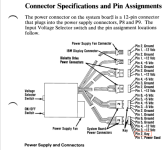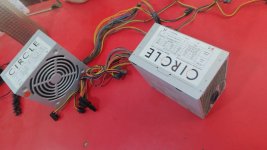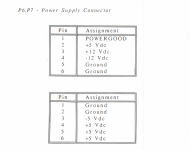Eudimorphodon
Veteran Member
FWIW, if you're happy gutting your original PSU you could probably get away with using one of these incredibly cheap "ATX to bench power supply converters" they sell on Amazon and eBay. It'll give you some fuses and a set of terminals you can connect the existing wires to and will *probably* fit in the 5155's power supply case.
The one thing these are missing is the -5v power regulator; take this with a grain of salt, but I'm *reasonably* sure that the lack of -5v isn't going to matter in the vast majority of PC/XT-class applications? I think the only thing that used it on the 5150 is the 4116 DRAM on the original 16-64K motherboard. It's *possible* there might be some expansion card that uses it, but I'd be kind of surprised. (Some clones omit -5v entirely from the PSU and ISA connection; the Tandy 1000, for instance.) If there's something else on the IBM motherboard that wants -5v by all means correct me.
That said, I second (third, whatever) the comment that maybe the better idea to do first is finding a quieter fan, perhaps a thermostatically controlled variable speed one. I guess I've never owned a 5155, but if it's like a 5150/60 the fan in the power supply is the only thing in the whole case providing any airflow, so *eliminating* it might be a bad idea. I mean, even if you've gone solid state for storage the 5155 does have a CRT monitor in it that ouputs a few BTUs.
Some ATX supplies also aren't completely happy unless they have some load on them; the small flexATX power supply I use for my bench/breadboard stuff falls into that category; it won't run its 3.3v regulator reliably unless it has some minimum load on the other legs. Solution: Xmas lights: (The old-fashioned incandescent ones, wired into multiple series substrings and soldered to the back of the breakout board.)

The one thing these are missing is the -5v power regulator; take this with a grain of salt, but I'm *reasonably* sure that the lack of -5v isn't going to matter in the vast majority of PC/XT-class applications? I think the only thing that used it on the 5150 is the 4116 DRAM on the original 16-64K motherboard. It's *possible* there might be some expansion card that uses it, but I'd be kind of surprised. (Some clones omit -5v entirely from the PSU and ISA connection; the Tandy 1000, for instance.) If there's something else on the IBM motherboard that wants -5v by all means correct me.
That said, I second (third, whatever) the comment that maybe the better idea to do first is finding a quieter fan, perhaps a thermostatically controlled variable speed one. I guess I've never owned a 5155, but if it's like a 5150/60 the fan in the power supply is the only thing in the whole case providing any airflow, so *eliminating* it might be a bad idea. I mean, even if you've gone solid state for storage the 5155 does have a CRT monitor in it that ouputs a few BTUs.
P.S. since I gave a multimeter recommendation, what I wrote is OK for picoPSU, for true AT power supply, provide some load on 12V rail first or else it might damage itself.
Some ATX supplies also aren't completely happy unless they have some load on them; the small flexATX power supply I use for my bench/breadboard stuff falls into that category; it won't run its 3.3v regulator reliably unless it has some minimum load on the other legs. Solution: Xmas lights: (The old-fashioned incandescent ones, wired into multiple series substrings and soldered to the back of the breakout board.)





